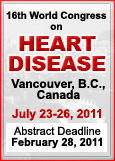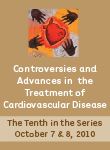|




| |
Poor neighborhood
linked to poor heart attack survival |
November 11, 2003
ORLANDO, FL (AHA)
–
Living in a low-income neighborhood increases the risk of death
after a heart attack, researchers reported today at the American
Heart Association’s Scientific Sessions 2003.
“Patients living in neighborhoods with a high percentage of
residents living below the poverty line had a death rate after
heart attack 30 percent higher than those in the wealthiest
neighborhoods,” said lead author Cathryn Tonne, M.P.H., a
doctoral candidate in environmental epidemiology at Harvard’s
School of Public Health in Boston, Mass.
The poverty line is an income threshold based on family size,
age of children and income. In 1999, the poverty threshold for
a family of four was $17,029 per year.
Researchers used data from the ongoing Worcester Heart Attack
Study, a community-wide study of trends in the incidence and
survival after heart attack among residents from Worcester,
Mass.
The study includes 2,539 confirmed cases of heart attack
collected in 1995, 1997 and 1999. About 58 percent of the
patients were male and the average age was 69. About 74 percent
were still alive at follow-up on Dec. 31, 2001.
Researchers divided income levels into five groups. The
death rate after heart attack was higher for the 20 percent of
patients living in the poorest neighborhoods.
The analysis adjusted for demographic characteristics,
hospital discharge and other conditions such as hypertension,
diabetes, a history of chest pain, heart failure and stroke.
The lack of local health clinics and low-cost healthful
foods, and inadequate public space for physical activity may be
some factors involved in the higher risk of death after heart
attack among those living in poverty, Tonne said.
“The precise pathways by which poverty at the neighborhood
level affects survival have not yet been identified, but
residents of deprived neighborhoods may be of poorer overall
health and experience more psychosocial factors like stress,
social isolation and depression," she said.
“The relationship between poor survival after heart attack
and neighborhood poverty may also be due in part to exposure to
traffic-related pollutants, housing conditions and other aspects
of the physical environment.
The findings of the study show that even in a relatively
small geographical urban area there can be a wide variation in
heart attack survival, which appears to be associated with
poverty. “A greater understanding of the pathways by which
poverty affects survival after a heart attack may help us design
more focused programs to counteract poverty’s effects," Tonne
said. "Our results suggest that steps need to be taken to
prevent excess death after heart attack at the neighborhood
level in addition to those taken at the individual level.”
Co-authors are Joel Schwartz, Murray Mittleman, Steve Melly,
Helen Suh and Robert Goldberg. |
|
|
|